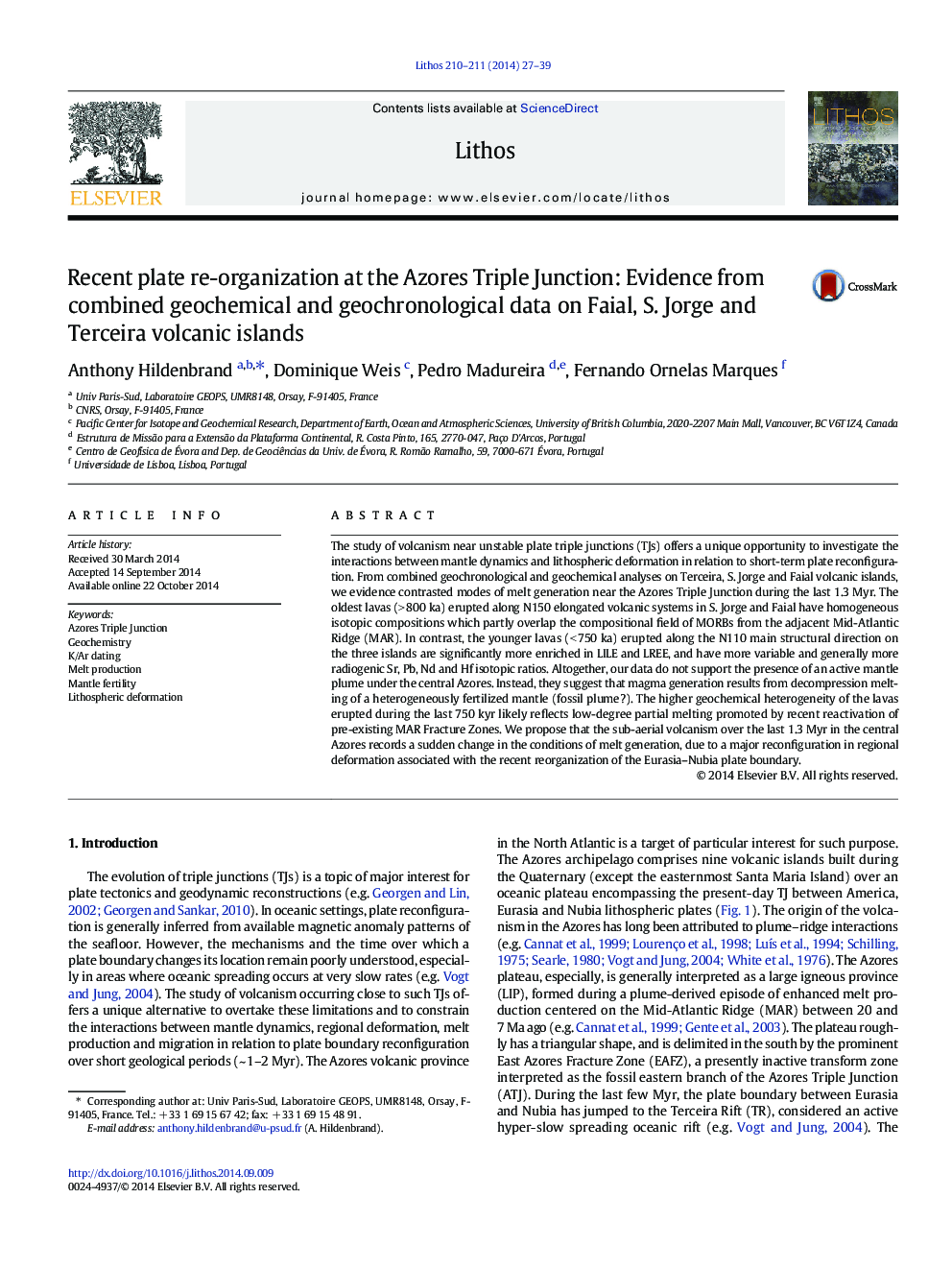| کد مقاله | کد نشریه | سال انتشار | مقاله انگلیسی | نسخه تمام متن |
|---|---|---|---|---|
| 4715763 | 1638670 | 2014 | 13 صفحه PDF | دانلود رایگان |

• The central Azores volcanic islands developed close to a major plate triple junction.
• From K/Ar and geochemistry on three islands, we track how the triple junction evolved.
• A major change in melt generation and extraction occurs between 800 ka and 750 ka.
• It evidences contrasted deformation and melting of a previously fertilized mantle.
• This change records a major reconfiguration of the Eurasia–Nubia boundary.
The study of volcanism near unstable plate triple junctions (TJs) offers a unique opportunity to investigate the interactions between mantle dynamics and lithospheric deformation in relation to short-term plate reconfiguration. From combined geochronological and geochemical analyses on Terceira, S. Jorge and Faial volcanic islands, we evidence contrasted modes of melt generation near the Azores Triple Junction during the last 1.3 Myr. The oldest lavas (> 800 ka) erupted along N150 elongated volcanic systems in S. Jorge and Faial have homogeneous isotopic compositions which partly overlap the compositional field of MORBs from the adjacent Mid-Atlantic Ridge (MAR). In contrast, the younger lavas (< 750 ka) erupted along the N110 main structural direction on the three islands are significantly more enriched in LILE and LREE, and have more variable and generally more radiogenic Sr, Pb, Nd and Hf isotopic ratios. Altogether, our data do not support the presence of an active mantle plume under the central Azores. Instead, they suggest that magma generation results from decompression melting of a heterogeneously fertilized mantle (fossil plume?). The higher geochemical heterogeneity of the lavas erupted during the last 750 kyr likely reflects low-degree partial melting promoted by recent reactivation of pre-existing MAR Fracture Zones. We propose that the sub-aerial volcanism over the last 1.3 Myr in the central Azores records a sudden change in the conditions of melt generation, due to a major reconfiguration in regional deformation associated with the recent reorganization of the Eurasia–Nubia plate boundary.
Journal: Lithos - Volumes 210–211, December 2014, Pages 27–39